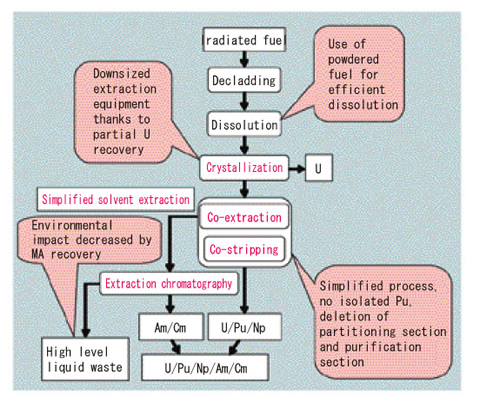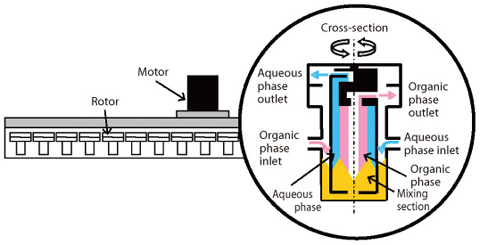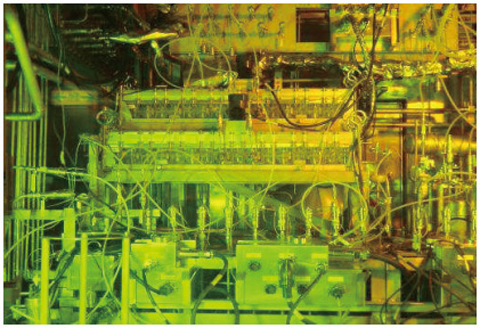
Fig.1-13 Outline of the NEXT Process

Fig.1-14 Type CPF centrifugal contactor

Fig.1-15 Centrifugal contactors in hot cell
We have been studied an advanced aqueous reprocessing process, named New Extraction System for TRU Recovery (NEXT) (Fig.1-13). The NEXT process basically consists of Uranium (U) crystallization, simplified solvent extraction of U by the extractant tri-n-butylphosphate (TBP), Plutonium (Pu) and Neptunium (Np) co-recovery, and Americium (Am) and Curium (Cm) recovery with extraction chromatography technology.
In the NEXT process, it is desirable to recover not only U and Pu but also minor actinides (MAs) for loading them in MOX fuel of the advanced reactor. This will be effective in decreasing environmental impact because it brings about the reduction of long-lived radioactive elements in the wastes.
Among the MAs, Am and Cm are poorly extracted by TBP. Therefore, these elements need to be separated from high level waste using a new extractant which has stronger affinity to MAs than TBP. On the contrary, by proper control of Np valence, it is possible to recover Np with U and Pu by TBP. Assuming that a rather low decontamination factor of the reprocessing product is made possible by the fast reactor fuel cycle, partitioning section and purification section are deleted, and U, Pu and Np co-recovery flow sheet is designed by single cycle.
Experimental studies using irradiated fuel have been carried out at the Chemical Processing Facility (CPF) with centrifugal contactors, whose residence time is considerably smaller than that of mixer-settler (Fig.1-14, Fig.1-15). The feed solution is adjusted to have high nitric acid concentration ([HNO3]). This condition adjusts the Np valence so that it is extractible by TBP. As expected, about 99% of Np was recovered with U and Pu in this process. Through this series of studies, a U, Pu and Np co-recovery process using high [HNO3] feed solution was successfully demonstrated.